I love coffee. Naturally, when I saw receipt “To make Coffee” in a tweet from Somerset Archives, I was intrigued.
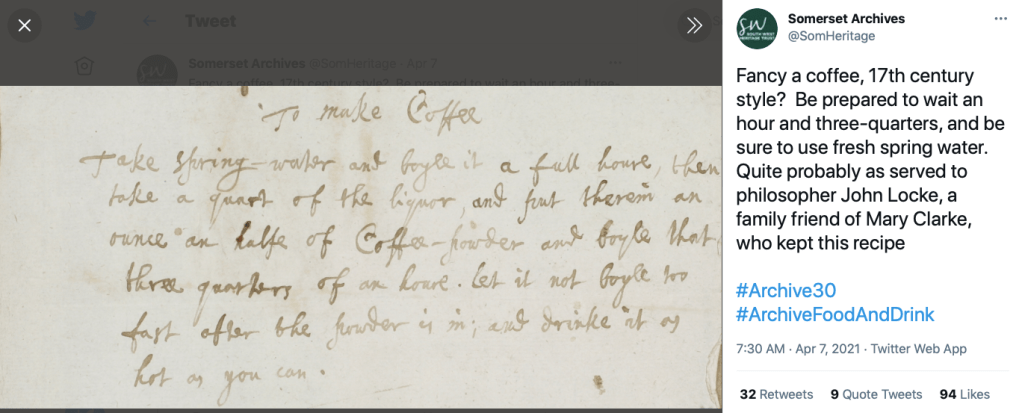
Reading recipe manuscripts, I’ve seen coffee called for as a flavoring for creams or “coffee cups” used for measurement. I’ve also read about the popularity of coffee in seventeenth-century London and the lively debates in coffee houses as part of the growing public sphere. This recipe, however, provides instructions for preparing coffee at home to serve to a household and its guests. It offers a window into domestic coffee consumption rather than the public coffee house. (There is also likely more to learn about the connection between Mary Clarke, her coffee recipe, and John Locke, but that will have to wait until I can visit Somerset.)
But this coffee recipe also gave me pause because it’s so simple. It only calls for “spring-water” and “Coffee-powder” and I knew that these two seventeenth-century ingredients were markedly different than the tap water and coffee beans that I had in my kitchen. Given these differences, how would I go about preparing it? And what could I possibly learn from trying this recipe in my own kitchen?
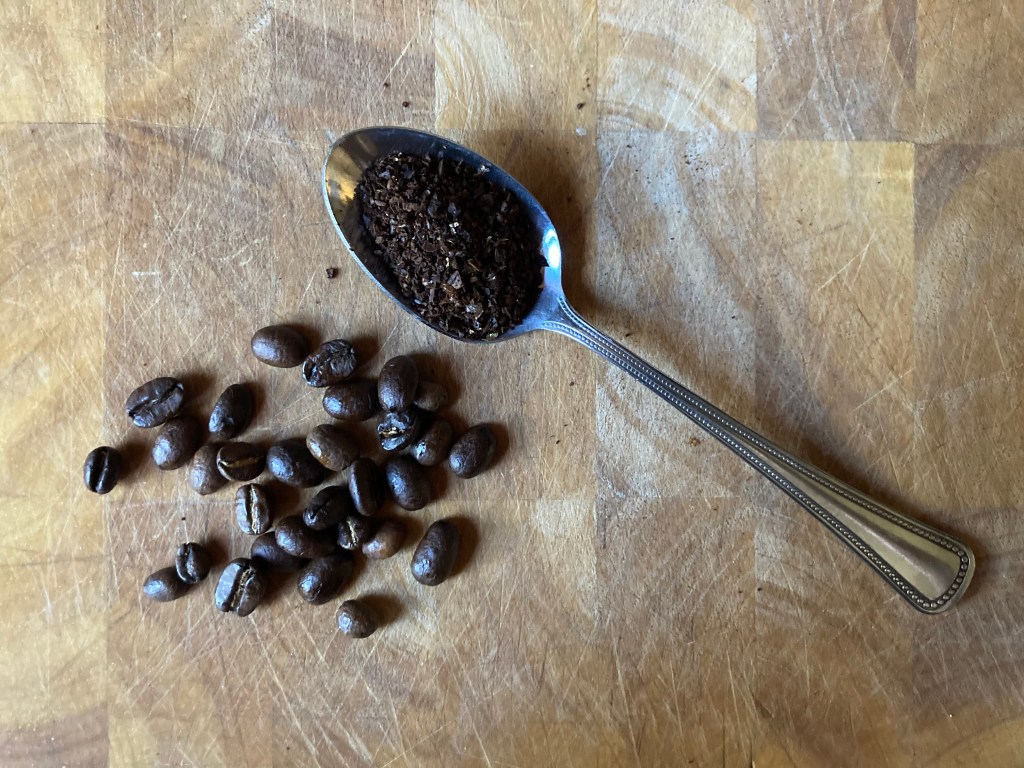
Yet the recipe has been stuck in my mind since I saw that tweet in April. It was often on my mind when I brewed a pot of morning coffee – how could 45 minutes of boiling ground coffee make a good cup of coffee? And it was on my mind when I read Neha Vermani’s wonderful post “Spilling the beans: The Islamic history of coffee” which centers Ottoman, Safavid, and Mughal coffee culture. Vermani shows that coffee was part of a thriving public sphere in early modern Islamic empires. The recipe was also on my mind when I read Gitanjali Shahani’s chapter on coffee, Othello, and racialized depictions of coffee and coffee-drinking in anti-coffee pamphlets in in her book Tasting Difference. In a post for “International Coffee Day,” Shahani writes, “To get coffee is also to participate in easy cosmopolitanism” and to consume an affordable imported luxury: “Despite its associations with banal productivity, it somehow manages to retain exotic, even sensuous, connotations.” By bringing the trendy and exotic “Coffee-powder” from the coffee house into the home, this recipe from the Somerset Archives offers an interesting window into how new imported goods became a part of daily, domestic life.
The Recipe
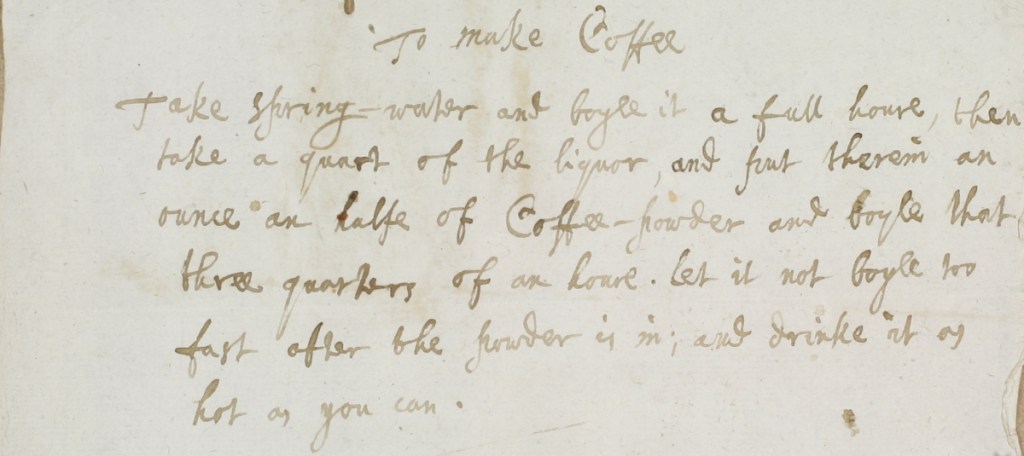
To make Coffee
Take Spring-water and Boyle it a full houre, then
take a quart of the liquor, and put therein an
ounce an halfe of Coffee-powder and boyle that
three quarters of an houre. Let it not boyle too
fast after the powder is in; and drinke it as
hot as you can.
I used the Folger’s helpful guide to measurements to figure out what “an ounce an halfe” of coffee would be in modern measurements: 46.65 g. I also decided to simply bring my tap water to a boil because purifying spring water was not one of my concerns. I tested this recipe with 44 North Coffee, Royal Tar Blend that was roasted earlier this month and that I freshly ground from whole beans just before preparing the recipe. This is likely not the kind of coffee that Mary Clarke served John Locke in terms of place of origin, age, roasting method, or grinding method. Nevertheless, the recipe brewed a bold and distinct cup of coffee.
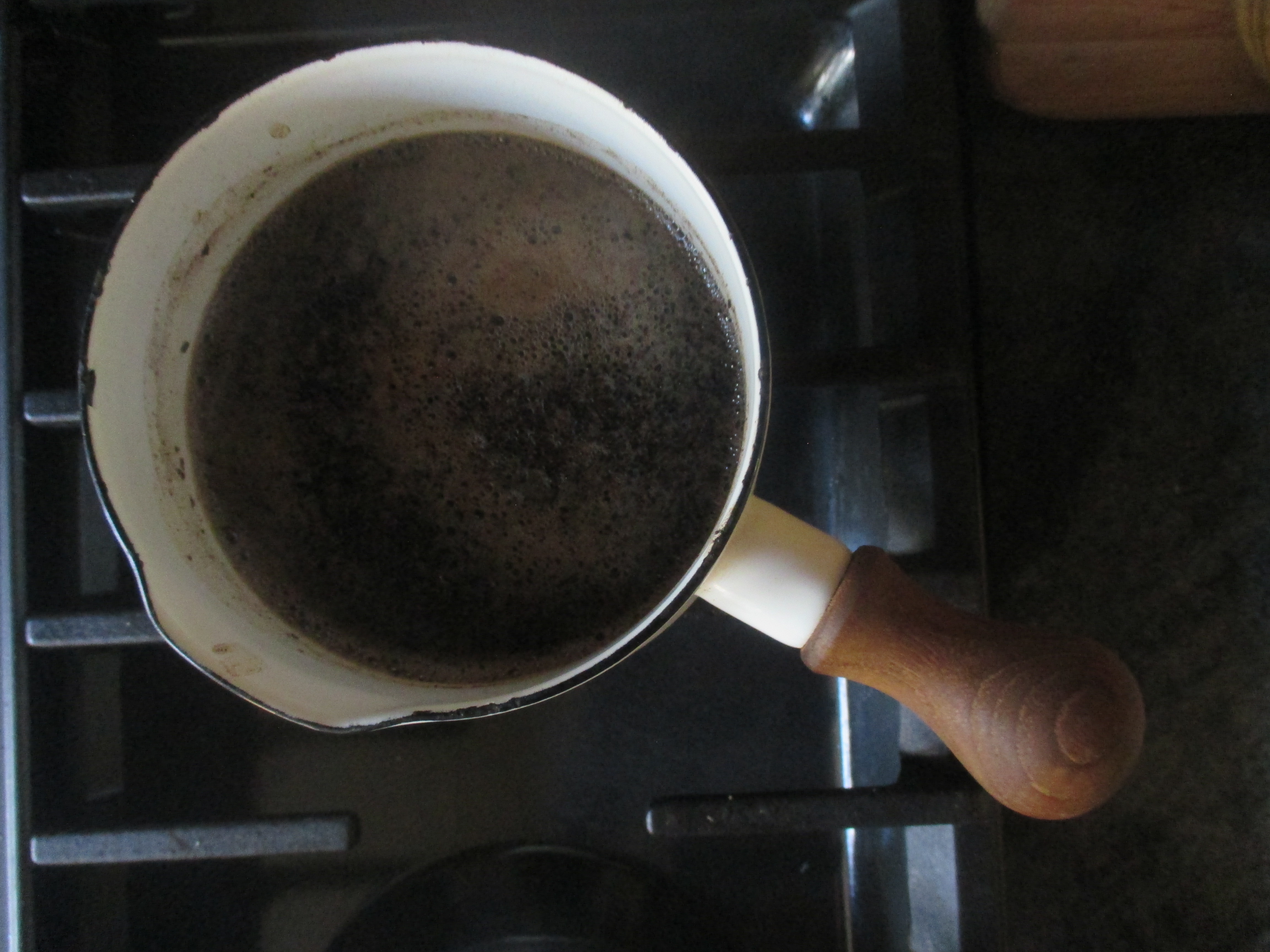

Updated Recipe
Halved from the original. Makes 1 cup (8 oz) coffee.
2 cups boiling water (16 oz)
23 g ground coffee (.75 oz, a heaping 1/3 cup)
Boil more than 2 cups of water in a kettle.
Pour two cup of boiling water into small pot. Add the coffee.
Simmer over a low heat for 45 minutes.
Pour coffee into a cup leaving the grounds in the pot. Drink as hot as you can.
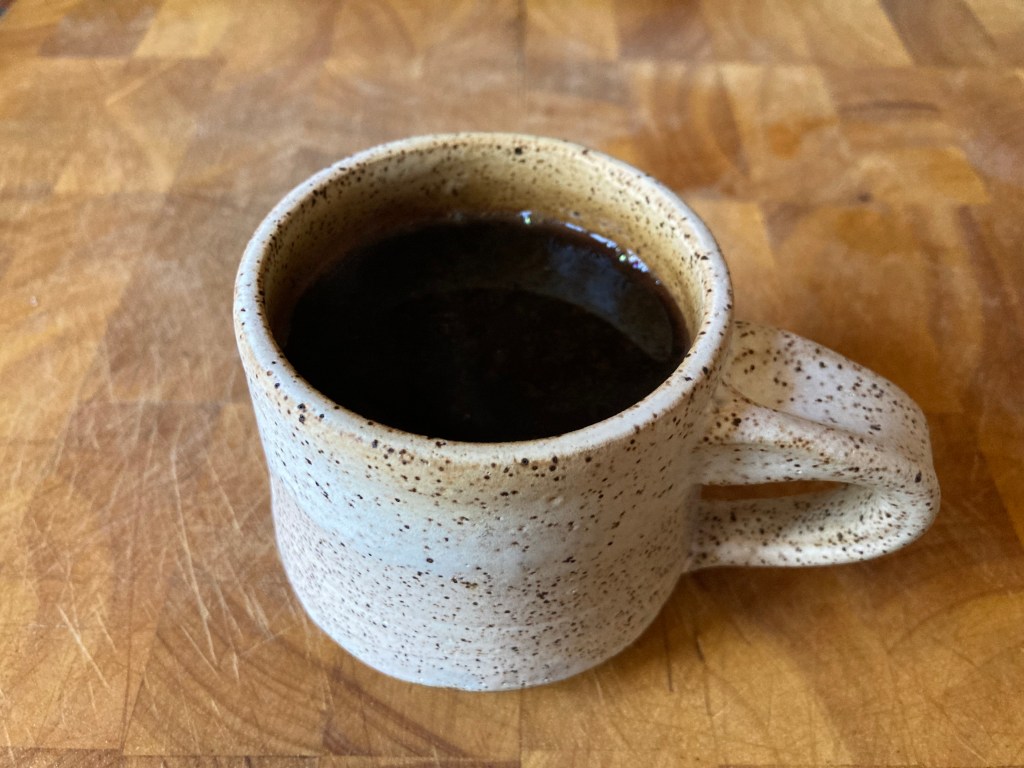
The coffee was strong, fragrant, and flavorful. The oily sheen on the top of the cup showed that it contained a high concentration of fragrant oils. This is to be expected from coffee brewed by boiling the grounds in water rather than passing hot water through grounds. In this way – and this way alone – the brew reminded me of Turkish coffee that I’ve had in restaurants. Over the course of 45-minutes of simmering, half of the water evaporated yielding a concentrated cup.
It was certainly more intense in flavor than the coffee I brewed in my Mr. Coffee from the same beans at the same time. The color of the coffee made with the seventeenth-century recipe was only slightly darker in color than the coffee that I’d brewed in my normal pot for far less time.
After tasting it as hot as I could stand it (as the recipe instructs) and comparing the coffee to my everyday brew, I added some half and half (my preferred creamer) and watched as the cream distributed through the cup in different patterns than normal, again showing the higher concentration of oils. It was a rich and luscious cup of coffee.
Boil the water a full hour! Oh my!
Ms. Nicosia, I have following your blog for many years now, and your coffee entry of today was definitely something I needed to comment upon. First, as a fellow culinary historian, I loved it and the way you explain all your recipes and interpretations have always been a pleasure to read. I have 2 comments re: the coffee. First, as a native New Orleanian, it is safe for me to say that I agree with most of your assessments. Second, although the English are not noted for their culinary exploits, this shows that – at least in the 1600’s – they were on par with their French counterparts across the channel – also with the folks across the Appalachians in the Mississippi Valley.
Thank you for your kind words about my work and for reading! In the seventeenth century, the English were definitely up to the standard of their European and American counterparts in inventiveness and delicious seasoning.
Update: Lisa Smith directed me to this post she wrote wherein she recounts how Richard Bradley described one method of roasting coffee beans. https://recipes.hypotheses.org/17357
Reblogged this on All Things Tudor.
Pingback: To make Coffee - Cooking
If you enjoyed Vermani’s blogpost, you might like an article I recently had published on coffee culture in the Western Balkans (shameless self-promotion, I know, but humour me).
https://journals.ku.edu/folklorica/article/view/14968
Thank you for sharing your article! Adding it to my reading list.
Pingback: how to get coffee grounds out of french press? – Coffee Tea Room
Pingback: how to make coffee with creamer? – Coffee Tea Room
Pingback: how to make the best tasting coffee? – The coffee around
Pingback: who makes folgers coffee? – The coffee around
Pingback: how to boil coffee? – Coffee Tea Room
Pingback: how to make flavored coffee beans? – Coffee Tea Room